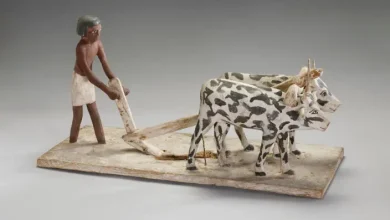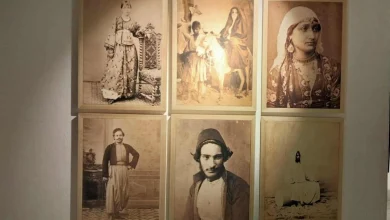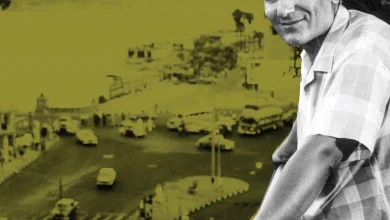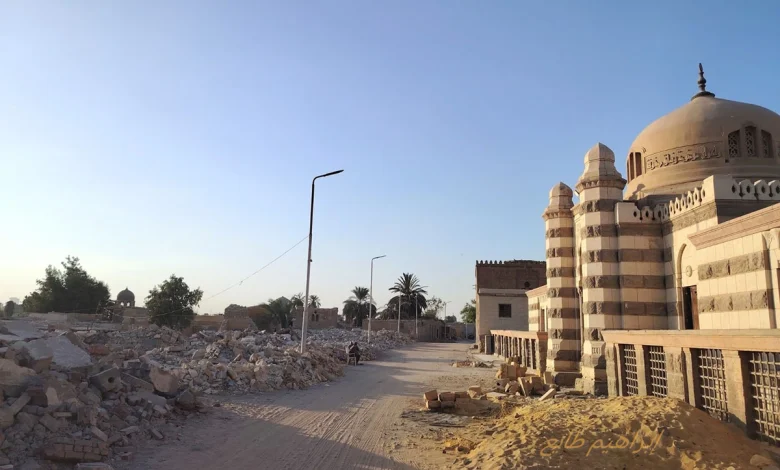
Disappearing traces: “Heritage destruction” spreads in Cairo’s cemeteries
At the end of October, Prime Minister Mostafa Madbouly appeared before all Egyptians to announce that demolition work in Cairo’s cemeteries would stop and that no further mistakes would be made in this matter. However, on the ground, some 10 months after the prime minister’s statement, it has become clear that Madbouly’s statements have not reached the bulldozers.
Demolition work is continuing apace, and at an even faster rate, to build a traffic artery that will divide Al-Shafei (Al-Qarafa Al-Sughra) into two parts after the cold-blooded demolition of dozens of graves, creating a hole in Cairo’s memory by erasing a new group of historic graves from memory with no possibility of recovery.
The news coming from the cemeteries is not promising. as demolition work is in full swing in Turb al-Shafei (the Small Cemetery) and Turb al-Sayyida Nafisa, suggesting that we are about to suffer another huge loss that will erase many of the landmarks of these historic cemeteries, along with a number of courtyards that contain some of the rarest elements of the Small Cemetery.
***
The urban fabric of this unique area of Cairo has been mercilessly and permanently destroyed. The tombs located in front of Hosh al-Basha (which houses a group of tombs of Egyptian rulers from the Muhammad Ali family and their families) have been removed.
The tomb of Prince Yusuf Kamal, founder of the School of Fine Arts and patron of the arts, and pioneer of geographical studies in Egypt, whose unique encyclopedia (The Kamal Collection on the Geography of Egypt and the Continent) stands at the forefront of his work, was also removed.
Ibrahim Tayea, one of the most important documenters of cemeteries, warned of signs of demolition of the dome of Salim Pasha al-Hajazi, known as the dome of Shaheen King, which is one of “the most beautiful domes in Al-Qarafa, a great and unique dome, unparalleled in its kind.” According to him, its walls have been demolished and its doors and windows removed in preparation for its imminent demolition.
Mona Selim wrote that the tomb of her grandfather, Rashwan Pasha, which contains the remains of most of her family, has begun to be demolished despite its exceptional beauty. The demolition of the Khalil Agha cemetery is also nearing completion, along with dozens of other cemeteries in the area which, in addition to their historical and heritage significance, form part of the unique urban fabric of Cairo’s cemeteries, but have been removed without any consideration or respect for irreplaceable heritage.
***
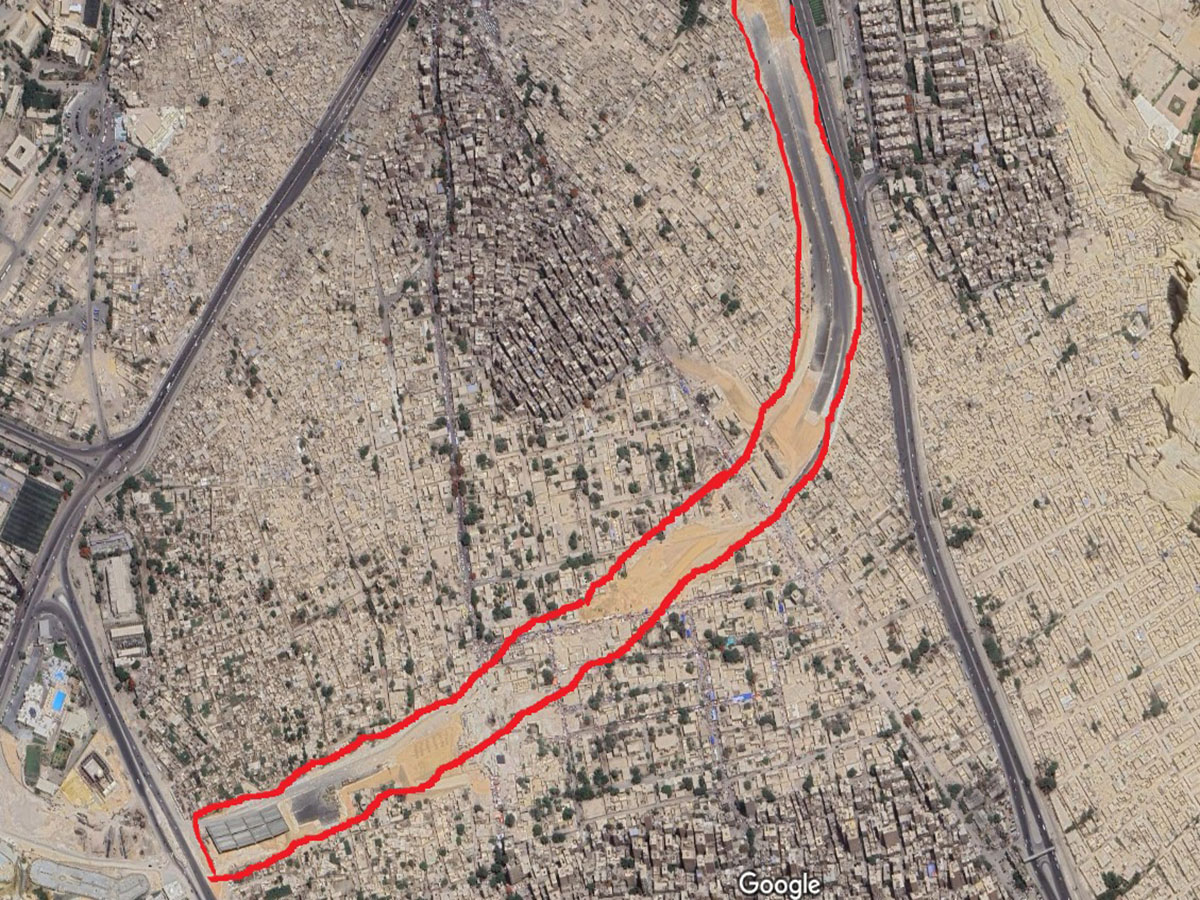
Google Maps here reveal the extent of the demolition. By comparing the images published by BabMsr last April with Google’s aerial maps of the same area in Turb al-Shafei, one can easily see the extent of the destruction wrought on this cemetery.
In four months, the demolitions on Al-Tahawiyya Street have been expanded, road paving has already begun, and the “centralization” of the Small Cemetery is proceeding with remarkable success. There is no consolation for lovers of Cairo’s heritage. Google Maps, along with photos documenting the cemeteries, reveal the extent of the crime committed against Turb al-Shafei (the small cemetery), which is facing the threat of cultural genocide.
The ongoing demolition has literally affected every part of Cairo’s cemeteries. There is no place left untouched by the bulldozers that have become the symbol of the government’s “development” projects, which are being imposed on everyone, with the objections of experts, interested parties, and documenters falling on deaf ears. No voice is heard above the noise of development.
It must be emphasized that no one is against development as a principle, but what we reject is that the slogan of development becomes a banner for violating the urban fabric of a historic city like Cairo, which has historical and heritage layers dating back more than 1,400 years. It cannot be treated with the logic of real estate developers, who only look at maps and prime locations that make their mouths water, and then with the stroke of a pen, they delete everything on them without understanding or awareness of the importance of what has been deleted. Disasters are committed against the city’s history with complete ease by those who do not know the importance of what they are destroying.
***
The ongoing demolition operations are targeting a new group of historic tombs that have had the misfortune of being located in the path of a planned traffic artery in the heart of the Small Cemetery, which dates back at least 900 years. The artery is intended to replace the current Salah Salem road, north of Bab al-Qarafa and the path of the Majra al-Ayoun wall.
No one knows the fate of the tomb of Imam Warsh (d. 197 AH/812 AD), one of the most famous scholars of his time and author of the famous narration about Nafi, one of the seven readers of the Holy Quran. The demolition has reached the graves around him. as shown by satellite images and Google Maps. His tomb is located in the heart of the new irrigation channel, and no one is talking about the fate of this tomb, which has great historical significance due to its location as one of the historical landmarks of the Small Qarafa. However, it seems that the bulldozers are not concerned with historical value.
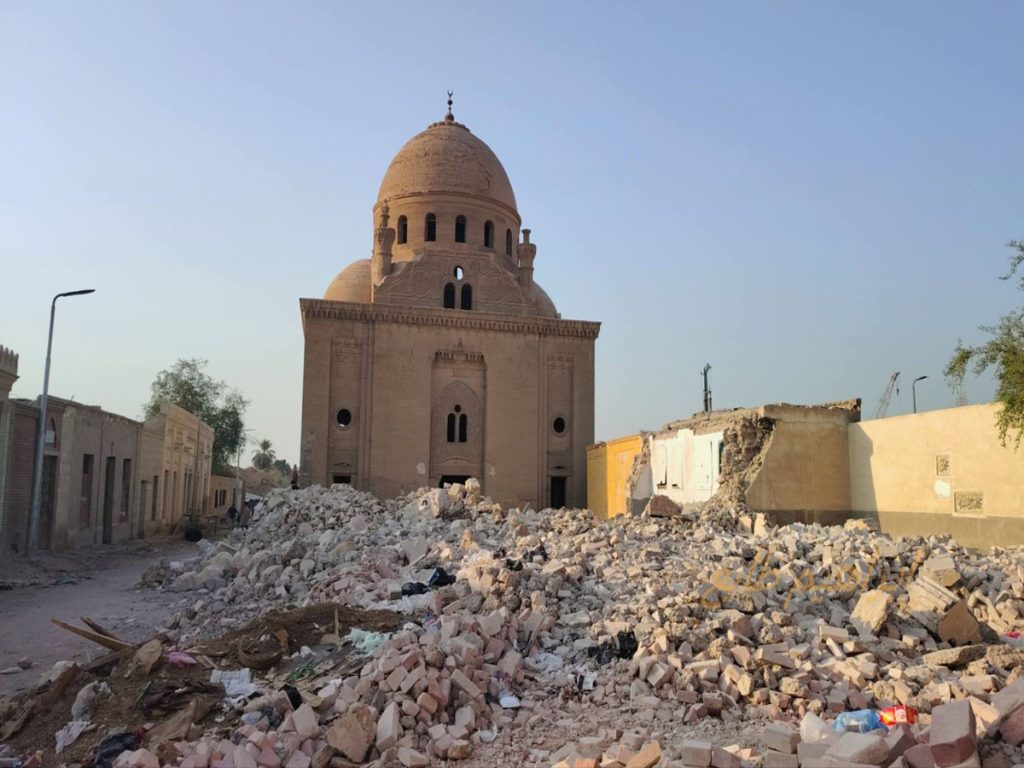
***
The demolition and removal does not stop at Tarb al-Shafi’i (the Small Cemetery), but has spread to almost every place in the cemeteries. The demolition work has reached the graves south of the Sayyida Nafisa Mosque, one of the oldest areas in the cemeteries of Cairo.
The government is also currently continuing with the destruction of the graves in Tarab Bab al-Nasr, which date back to the second Fatimid period and are of particular heritage value as they are covered with rare wooden compartments, as well as their historical value as the only remaining cemetery from the Fatimid period. The failure to conduct any excavations in the area, which deserves to have its hidden treasures uncovered, compounds the expected historical and heritage loss.
Over the past five years, many heritage and historical cemeteries have been lost, whose value ranges from the literary value of those buried there to their artistic value due to their unique and rare architectural style and the unique tombstones that reflect their beauty, as well as the historical value of the urban fabric of Cairo’s cemeteries.
***
Who would have thought that the tomb of Mahmoud Sami al-Baroudi would be demolished, or that the dome of Mahmoud Pasha al-Falaki, with its unique design and minaret of the adjacent mosque, would disappear from existence, and that the tomb of Ahmed Shawqi, Prince of Poets,
was a stone’s throw away from being swallowed up by oblivion, and that the demolition would extend to the graceful dome of Mustawla Muhammad Ali Pasha, whose demolition sparked a wave of widespread and angry reactions, but without any effect on the government’s plans to demolish more tombs.
The removal of the tombs began in July 2020 with the demolition of a group of tombs overlooking Salah Salem Road, in the heart of Tarb al-Gafir, part of the Mamluk Desert, to make way for a traffic hub. Since then, Cairo’s historic cemeteries have been at the mercy of government bulldozers, which have been operating with impunity in Cairo’s historic graveyards under the pretext of building a new network of traffic hubs, as well as a series of restaurants, cafes, and consumer activities.
This is how the heritage of a thousand-year-old city like Cairo is being destroyed for projects of dubious value, which could have been built without touching this irreplaceable heritage. But the government has chosen to sacrifice all this heritage on the altar of development, which is devouring Cairo’s history without mercy or compassion.


